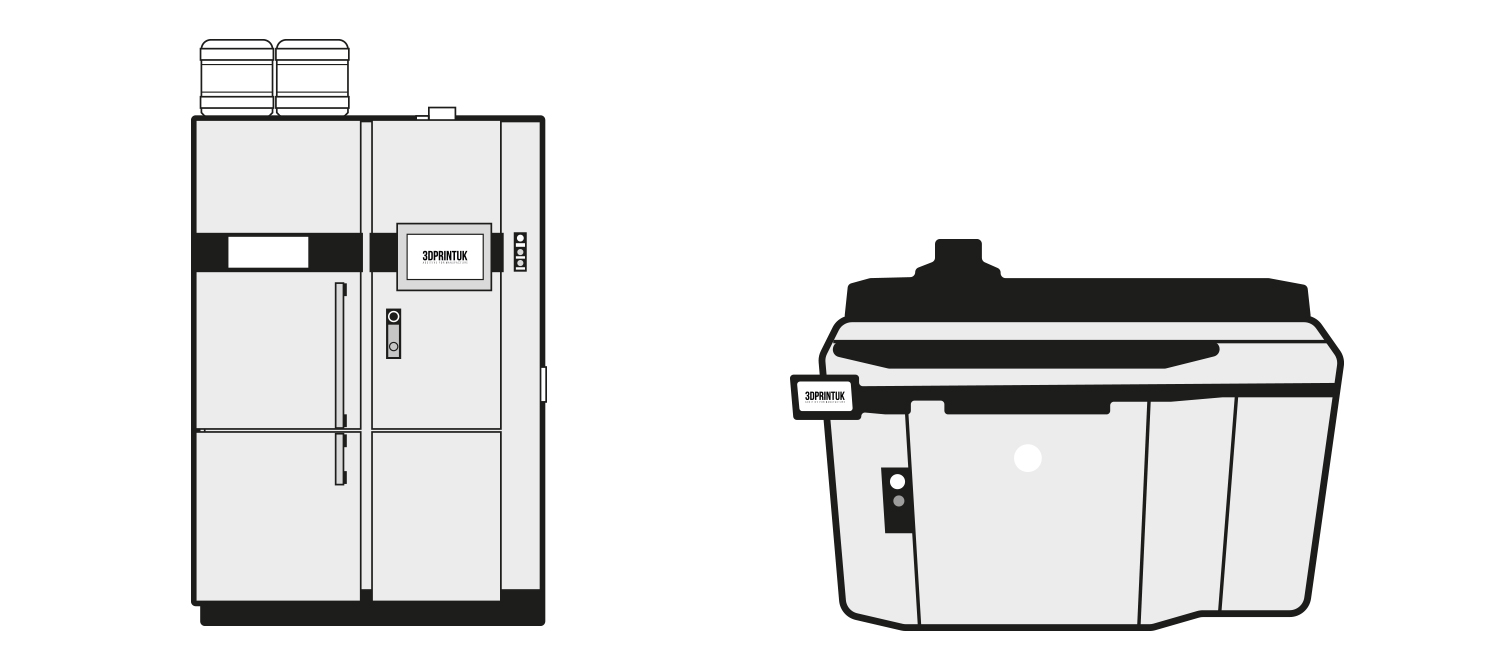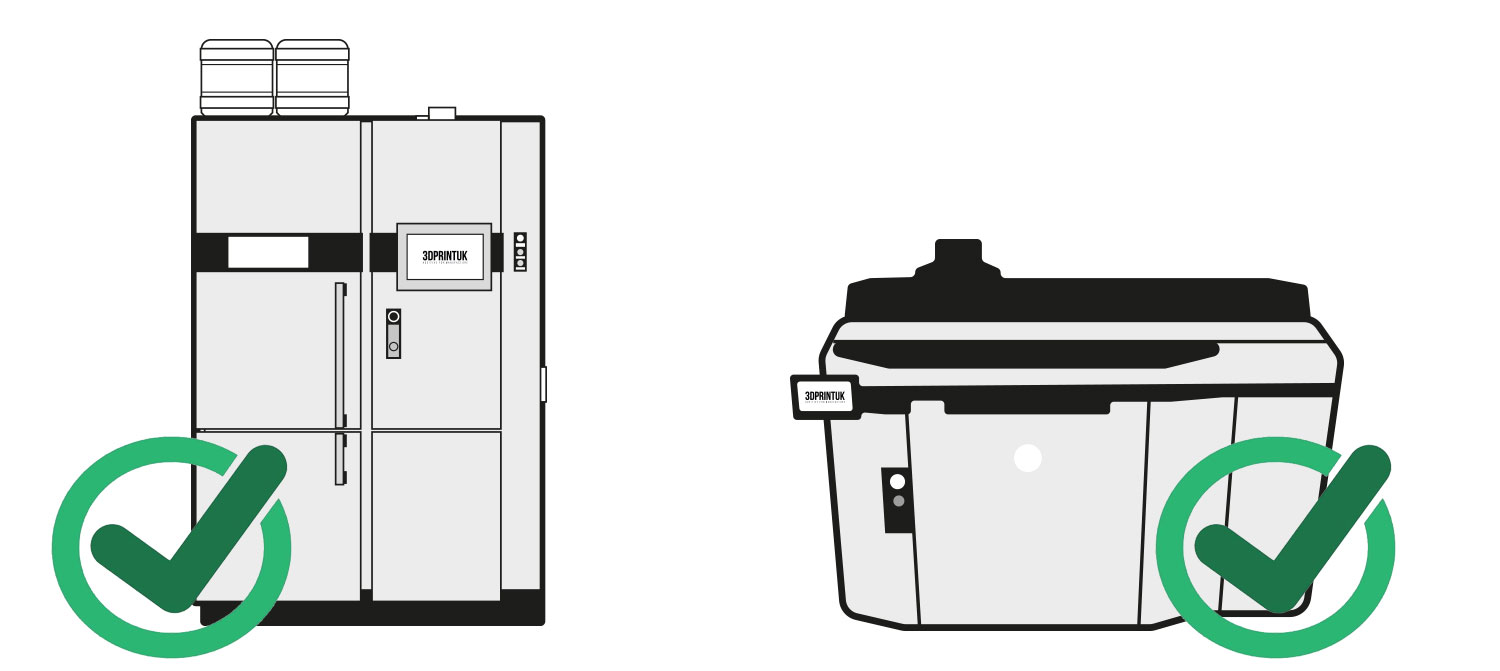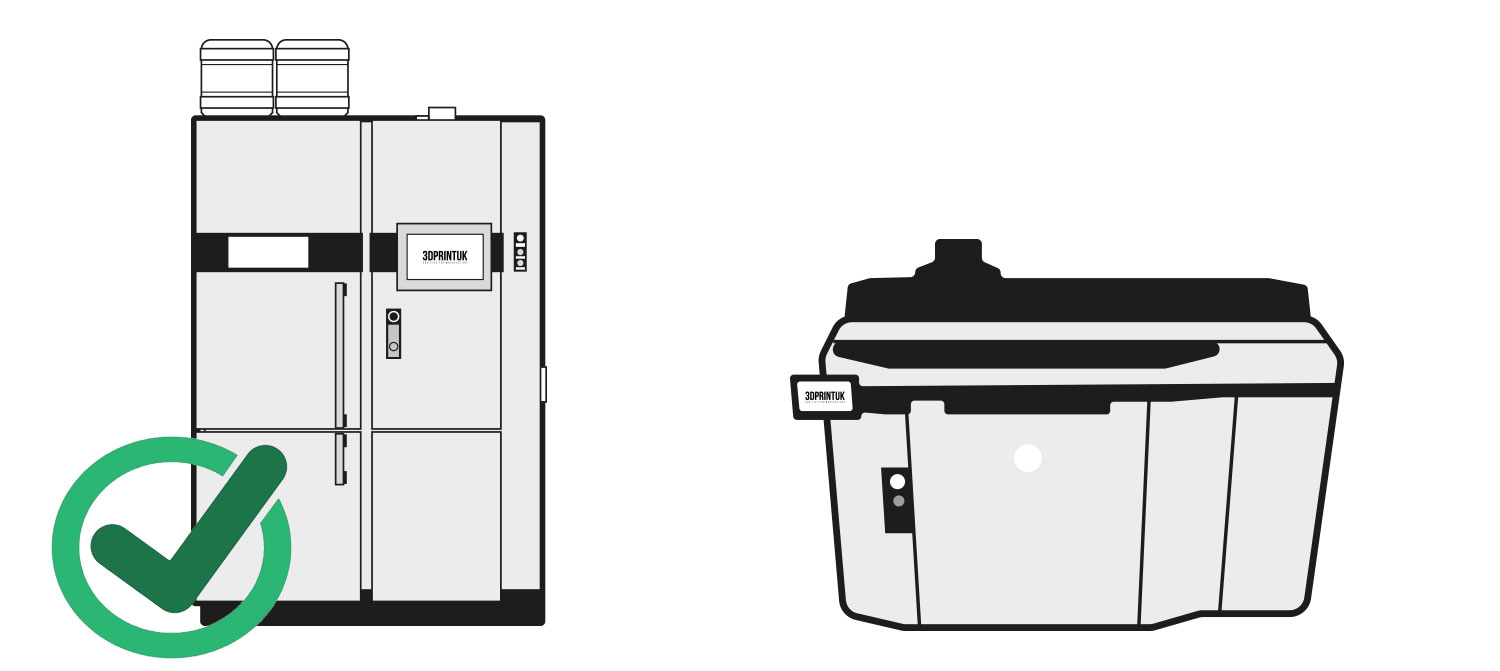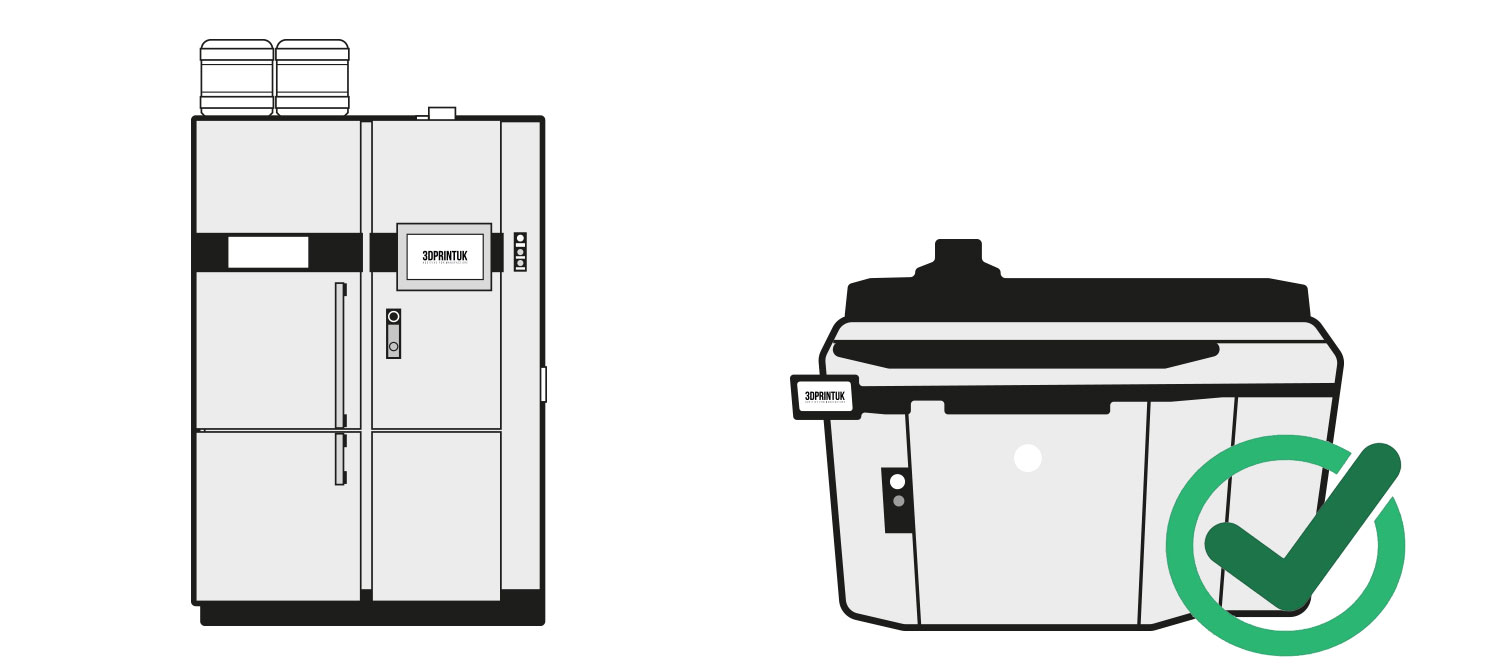When to choose SLS or MJF?
Our goal is to produce the best part for you using the technology that is best suited.
Whether it be SLS or MJF you are guaranteed the best of powder bed fusion technology.
When to choose HP MJF or SLS
With the same base material and similar properties, which technology is best for your parts, SLS or MJF? Both processes are very similar and it is often tough to choose which is best for your product. Our online system is designed to give you the most cost effective way to produced your parts and we have made this guide to help you understand the benefits of each technology.
If you have any further questions please feel free to give us a call.
Overview
The choice between SLS or MJF is not black and white. Both systems have their advantages and disadvantages. Our focus is how to produce the best part for you. With either system you are guaranteed an accurate, ready for end use part, so the decision will mainly be driven by cost or a feature of the material that is of unique interest to you.
Cost is easy. We have done all of the work to ensure that our system gives you the cheapest option out of the two systems but the final choice is yours.
There are a couple of obvious tips that we can give you, please see below:

Cost
Often it will simply come down to cost. The processes do use the same base materials, but the way the fuse creates quite a difference when it comes to costing the parts up.
SLS uses lasers to melt the material together, whereas MJF uses a fusing agent with added heat to create the solid parts. SLS has more waste, but MJF has added cost with the fusing agents. SLS takes into consideration how much space the part takes in the build, where as MJF is more to do with the amount of material used by the part. This means that MJF is cheaper for less dense parts, and SLS is cheaper for more solid ones.
Nesting
One thing to note is that nested items are more expensive in generally with MJF than they are with SLS, whereas single items are often cheaper with MJF rather than SLS.
Our judgement: Comparable

Strength
SLS and MJF are comparable in strength of part. However, MJF emerges slightly ahead because it is more isotropic – this means that the strength in the Z is slightly greater. Both are rated at 48Mpa on paper, however 3DPRINTUK’s in house tests show SLS is 42Mpa in the Z direction of build, whereas MJF remains at 48Mpa.
Our judgement: Comparable

Accuracy
From extensive inhouse testing on both SLS and MJF, we have concluded that they are both as accurate as eachother. Officially from HP the figure is +- 0.25mm per 100mm, whereas EOS is +- 0.3mm per 100mm. However, due to our vast experience with SLS and our in house developed scaling software, we are finding that our SLS parts are more accurate in general than the official figures. Measuing of the same parts build across all our platforms have given near identical results.
Our judgement: Comparable

Colour variation
SLS parts are white and can be dyed to any colour (we currently only offer white, black, red, yellow, blue and green) whereas MJF is Grey when it comes out of the machine and can only be dyed black at the moment.
Our judgement: SLS Wins

Colour depth (Black only)
MJF dyed black is black all the way through though, whereas SLS is only dyed 200 microns deep.
Our judgement: MJF Wins

Solid Parts
If you have thicker parts that need to be printed solid (approx 20mm or thicker) MJF can suffer from a phenomenon called “Elephant Skin” – this is where the powder dosing is poor across the layers and leaves an unattractive rippling effect on the outer surface and can cause weakness in the part. SLS does not suffer from this, but very thick parts can have “banding” where the part contracts a little more at that level due to the extended layer time – this is not nearly as visually bad as Elephant Skin though.
Our judgement: SLS Wins

Weight
Our testing resulted in parts 3D printed utilizing the MJF system with PA 12 prove to be slightly heavier (1.01 g/cm3)compared with SLS parts printed with PA 2200 (0.95 g/cm3).
Our judgement: SLS Wins

Crispness and Small features, such as holes
MJF is slightly crisper than SLS for small details such as text etc, but they are both comparable in general.
Small holes below around 5mm diameter are rounder on MJF parts, whereas with SLS they can be very slightly elliptical.
Our judgement: MJF Wins

Surface finish
Both SLS and MJF parts are comparable in this regard, and both can be polished and shot peened.
Our judgement: Comparable

Other materials
